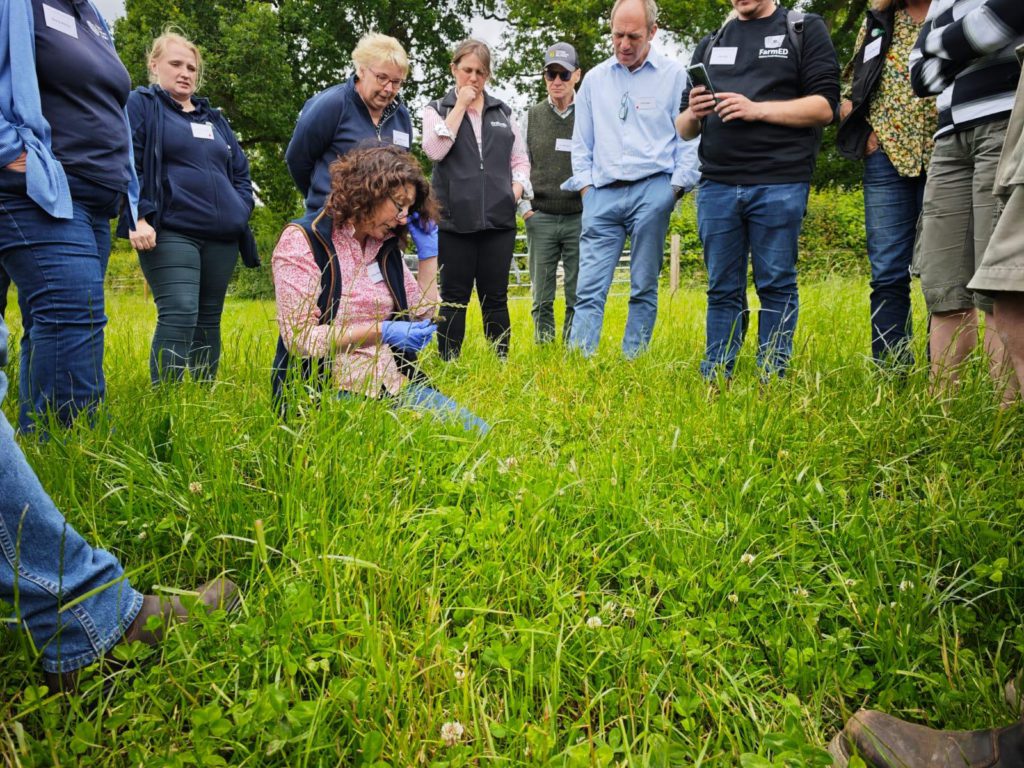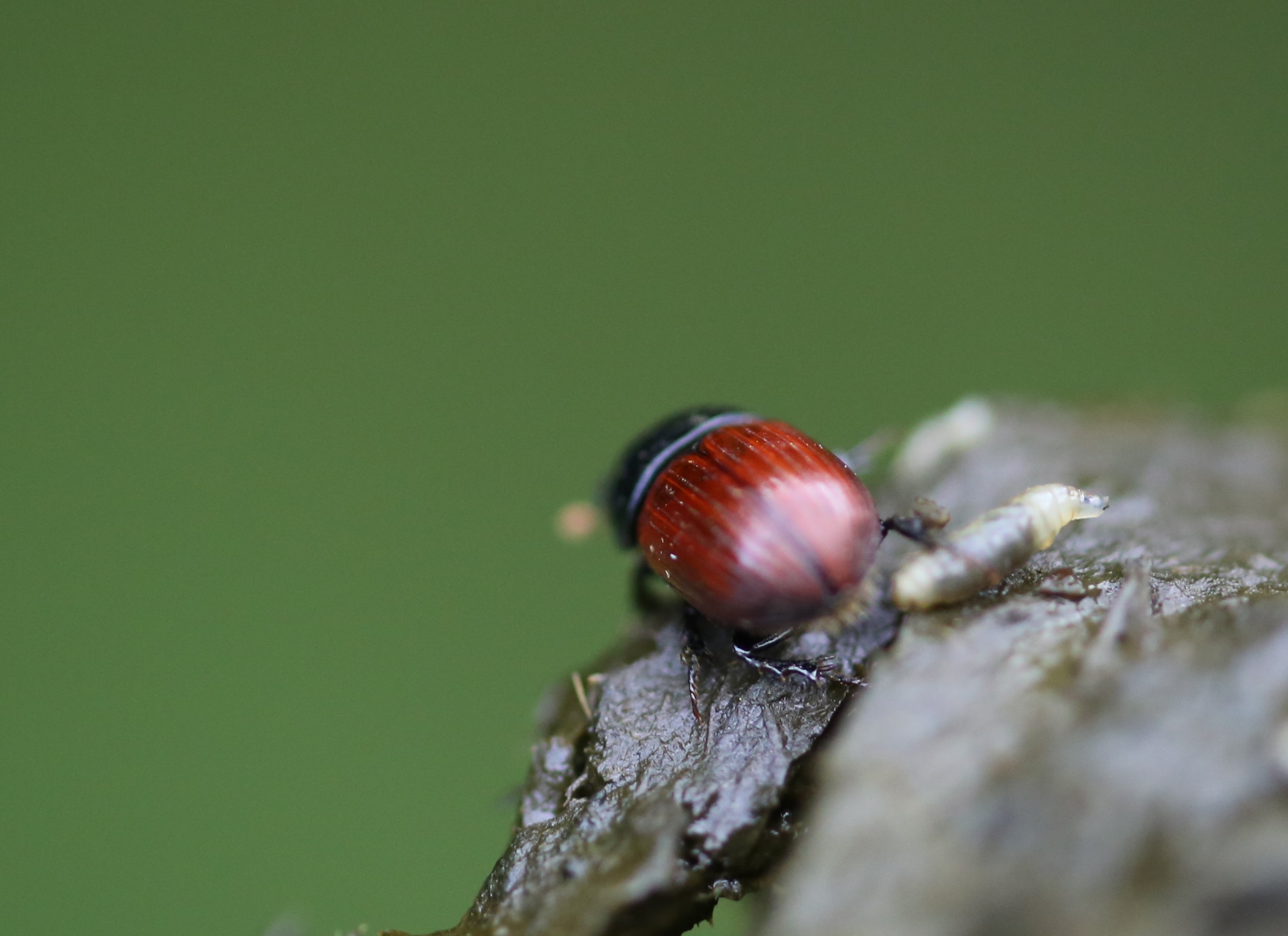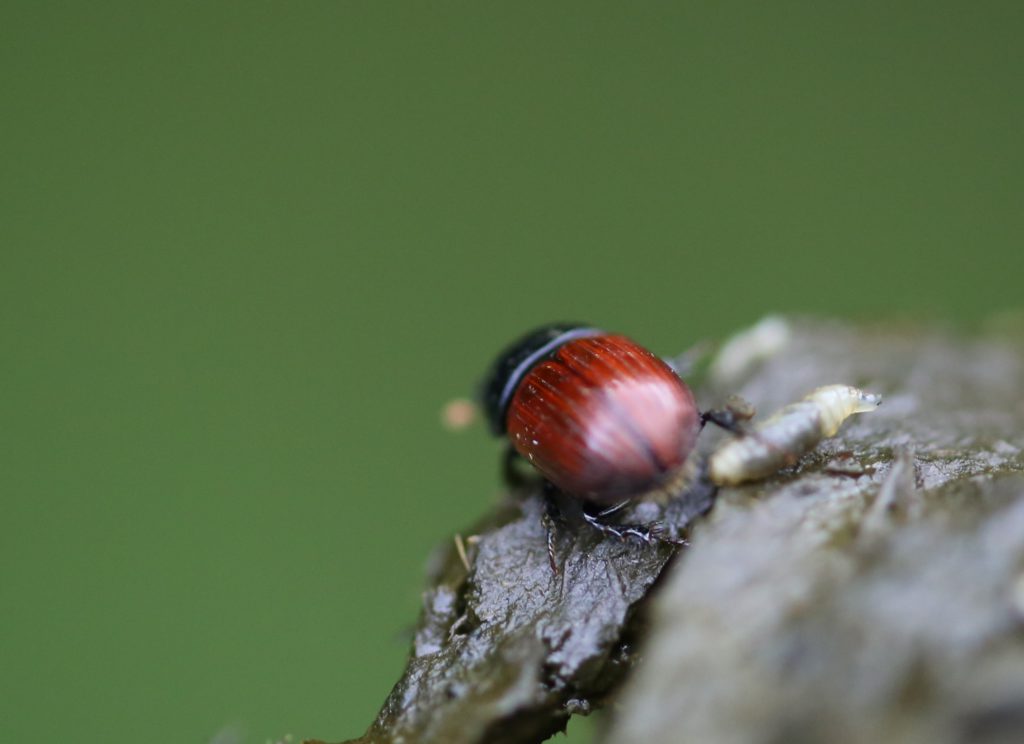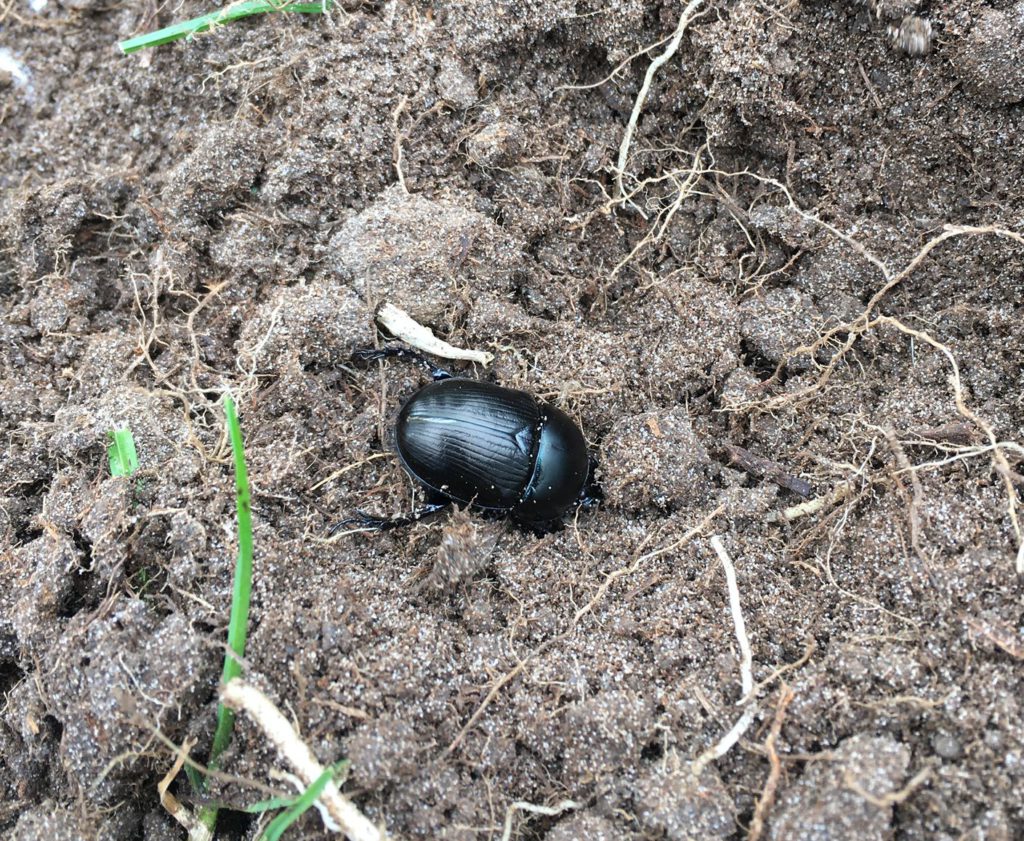
The inaugural Dung Beetle Conference took place in June 2024 at Yeo Valley Holt Farm in Bristol – a collaboration that puts this tiny beast on the farm vet agenda.
Written by Rob Howe
It would have seemed a far-fetched idea a few years ago, a two-day conference about dung beetles attended by farmers, vets, policymakers and schoolchildren. Yet in June this year, we pulled it off, with huge thanks to Dr Hannah Jones (Farm Carbon Toolkit) and Rob Howe (BCVA, COWS, Vet Sustain), together with event sponsors, First Milk, Yeo Valley, Techion, Micron Agritech and Duggan Veterinary Supplies.
Hannah and Rob share mindsets around regenerative farming topics and how dung beetles should fit into all farmer’s thoughts and practices. Researchers have previously held Dung Fauna conferences, but these have been largely academic. This re-imagining of those events held by Richard Wall, Bryony Sands, Sarah Beynon and others, aimed to focus on biodiverse farming and integrated parasite management (IPM), which has been the focus of Rob’s work both in practice, in research and in his Nuffield Scholarship.
Conference Write-Up
The conference was opened by Sarah Beynon who spoke passionately about dung beetles and of her seminal work calculating their positive £367m of beneficial financial impact every year to UK cattle farms. Darren Mann, widely considered the gospel on dung beetles, wowed the audience with his own passion and bluntly hilarious style! We then heard of the impact parasiticides have in the environment and the degradation times of dung pats, as well as new research linking their abundance and diversity to soil health parameters from Bryony Sands, video-linked from the USA.
Organisers found it rewarding to see all the decades of superb work from so many inspiring people, brought together and shared with those that need to know it most – farmers and vets.

There is an impressive body of work now that led to my own efforts in proving there is an alternative approach – Integrated Parasite Management (IPM)
Rob Howe, BCVA, COWS, Vet Sustain
Rob Howe spoke on the importance of IPM, and the vital role of the vet, along with a vision for animal health tied in with this new approach. I then had the privilege of handing over to a wide array of experts in their fields to talk on the individual subjects and strategies that make up IPM, including species diversity, farming biodiverse, breeding for resilience, the role of trees, pasture management, soils and FEC testing. It was a ram-packed day punctuated at lunch by a dung safari led brilliantly by Darren Mann.


Day Two started in the mature agroforestry system, and a dung beetle hunt was led by Claire Whittle, with input from many others including Sally-Ann Spence and Lindsay Whistance, whose work on the value of trees for livestock, needs much more airtime.

Over the two days we got to hear from so many great speakers all linking dung beetles to wider biodiversity including birds, a fantastic project on Dartmoor and how equine and small animal vets and owners are grasping the opportunity to have similar positive impact in their respective fields.
The responsible use of parasiticides
The conference ended with a workshop supported by BCVA, COWS and Vet Sustain. The workshop opened with a short “scene setting” presentation from the VMD with an overview of the current regulatory framework for veterinary medicines in the UK. The discussion groups focused on the issues around responsible prescribing and parasiticide use and identifying workable solutions and associated actions to drive much-needed positive change to promote the responsible use of parasiticides.
BCVA has been working hard behind the scenes for some years to influence progressive policy change in this area. BCVA’s policy on parasite control was launched by Sally Wilson in 2021, following Rob Howe’s IPM workshop and introduction to the power of dung beetles at Congress. BCVA has since been involved in wider collaborative discussions with the VMD and additional stakeholder organisations and recently worked with BVA on parallel activities to make progress on this important subject.
Key asks, actions & outcomes from the workshop
Farmers, farm advisors and farm vets all fed back in the workshops, offering a range of ideas, with the following common themes:
Education
- To promote IPM as a more sustainable way to approach the use of parasiticides, all groups cited novel education and training as essential – specifically, for practising vets but also in vet schools and agricultural colleges.
- A strong desire for everyone to get on board with a “new narrative” on display at the conference, reaching beyond IPM, producing food good for humans, the planet and of course animals.
- Peer-to-peer learning opportunities were valued highly by everyone when it came to shifting farming practices, with many on display at the conference.
Funding
- It was highlighted that opportunities for IPM to be funded within the SFI-type schemes, as it is in the arable sector, would be beneficial.
- A general fund for (farms’) innovative ideas rather than prescriptive lists. Excellent examples might be EID/ Handling/Weighing facilities for DLWG and helping IPM & targeted selective treatments.
- A cross-industry fund created to facilitate the rollout of IPM; training and tools for delivery and recording.
Monitoring
- Collecting baseline figures on top-level use for the livestock sector would enable monitoring of progress, similar to those seen with antibiotics. The VMD were present, and we hope in time will help deliver this.
- The same applies to the farm level where benchmarking could help drive change. This may be more likely to come from the industry itself.
Policy & Governance
- Advertising of parasiticides should not be targeted at end users (across spp)
- POM-V status could ensure this, but so could a legal change in advertising rules for parasiticides.
- IPM should come into landscape recovery, and eventually as standard everywhere
- A desire for support for vaccines such as louping ill to be available and others developed
- More robust environmental assessments (small animals particularly) and enforcements of product advisory wording across species.
Communication
- The need for improved communication between the entire farm team and advisors
- Improved communication between vets and SQPs would be ideal. An app to facilitate IPM may be able to help achieve this.
Landscape approaches
- Commons health plans and or landscape health plans (look outside the farm gate).
Industry support, facilitation & incentives
- Milk buyers are already involved in a positive way. Great examples here at the conference with First Milk and Yeo Valley sponsoring and encouraging positive changes.
- Others including M&S support farms to look at parasite control through an IPM lens and Muller leading the way in starting to measure usage.
Timeline for Change
- Sentiment for action was positive, with 5 years set as a target, since this movement is already happening as evidenced at the conference, and people are aware, so major change could happen quite quickly.
Get in touch and join the movement
The conference concluded with a commitment to work across the sector to progress these key actions. We would like to hear from anyone keen to help achieve these aims and or be involved in the next one. Please contact Rob_ Howe@BCVA.co.uk or info@dungbeetletrust.co.uk.
Conference Acknowledgements
This conference built on a brilliant legacy of research, and brought together farmers, vets, soil experts, entomologists, researchers, industry and public, to celebrate the great work that is going on, but also to shape future policy and regulation. In the interest of brevity, it hasn’t been possible to acknowledge every speaker, contributor or supporter of this event, but the organisers would like to thank everyone who helped make this happen and also show appreciation to all those who have worked for some time in this important area to advance our profession’s understanding. And finally, a huge thank you to all the event sponsors – Yeo Valley, First Milk, Techion, Micron Agritech and Duggan Veterinary Supplies – without whom we could not have made this day happen.

Conference Reflections from a Vet
Andy Adler – Farm Carbon Toolkit – Vet Perspectives
As a vet who has been out of clinical work for a while, I turned up to the Dung Beetle Conference 2024 due to my role in one of the sponsoring companies, Farm Carbon Toolkit. I had been aware of dung beetles and integrated parasite management (IPM), but I had little knowledge and no experience discussing IPM with farmers.
I found a place with positive energy and a diversity of farmers, vets, and industry professionals united in the need to identify how to support ecology in farming while supporting food production. The mix of sponsors from First Milk, Yeo Valley and Farm Carbon Toolkit meant that the industry was well represented and led the conversation on how to get to a farming system with a positive impact on the environment and nature.
Shifting baselines (Masashi Soga, 2018) come to mind for me. Farmers there described how dung pats would disappear within 24 hours as multiple species of dung beetles eat, bury and process the dung. I still find this expectation ‘unbelievable’; however, I accept that this is due to my shifted baseline of expectation. I also realised that as vets, we must deal with the conflict of interest between animal needs and the owner’s ability. Now, we have to deal with disputes between animal needs, nature needs and the owner’s ability to understand how best they can balance off competing demands.
I left after two days of interactive talks and an exploratory field safari, identifying dung beetles and understanding their abundance within healthy pats. My mind was opened. I now look in cow pats and understand how few beetles are on some farms.
The following questions (and more!) have sat with me since.
– How can we understand our shifted baseline and rebalance it?
– How do vets deal with an additional conflict of interest?
– Can IPM become a veterinary campaign similar to the Mastitis Plan or Health Feet Program?
I would highly recommend that farm vets think about dung beetles and their moral and ethical responsibilities towards the environment, animal welfare, and owners’ needs.




Recent Comments